Cat of the Month ~ December 2019
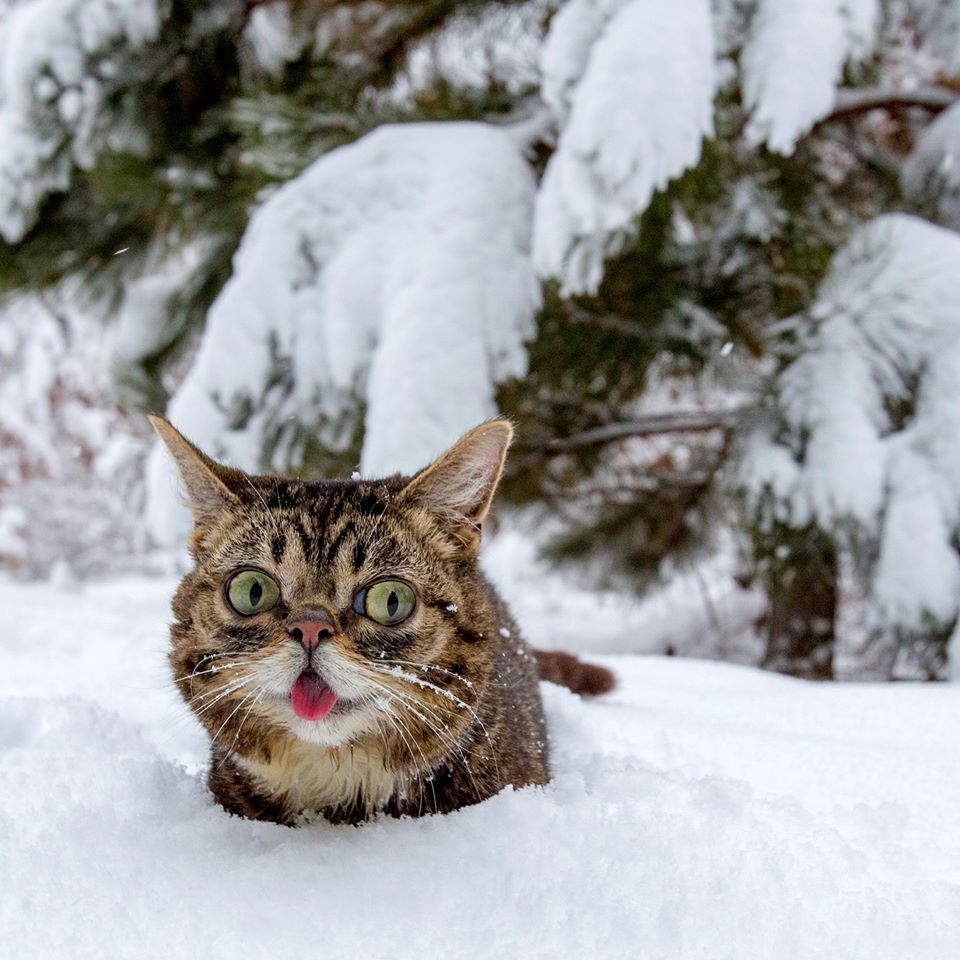
Photograph: © Mike Bridavsky
RIP Lil Bub
Cat of the Month ~ December 2019

Photograph: © Mike Bridavsky
RIP Lil Bub
Cat(s) of the Month ~ November 2019
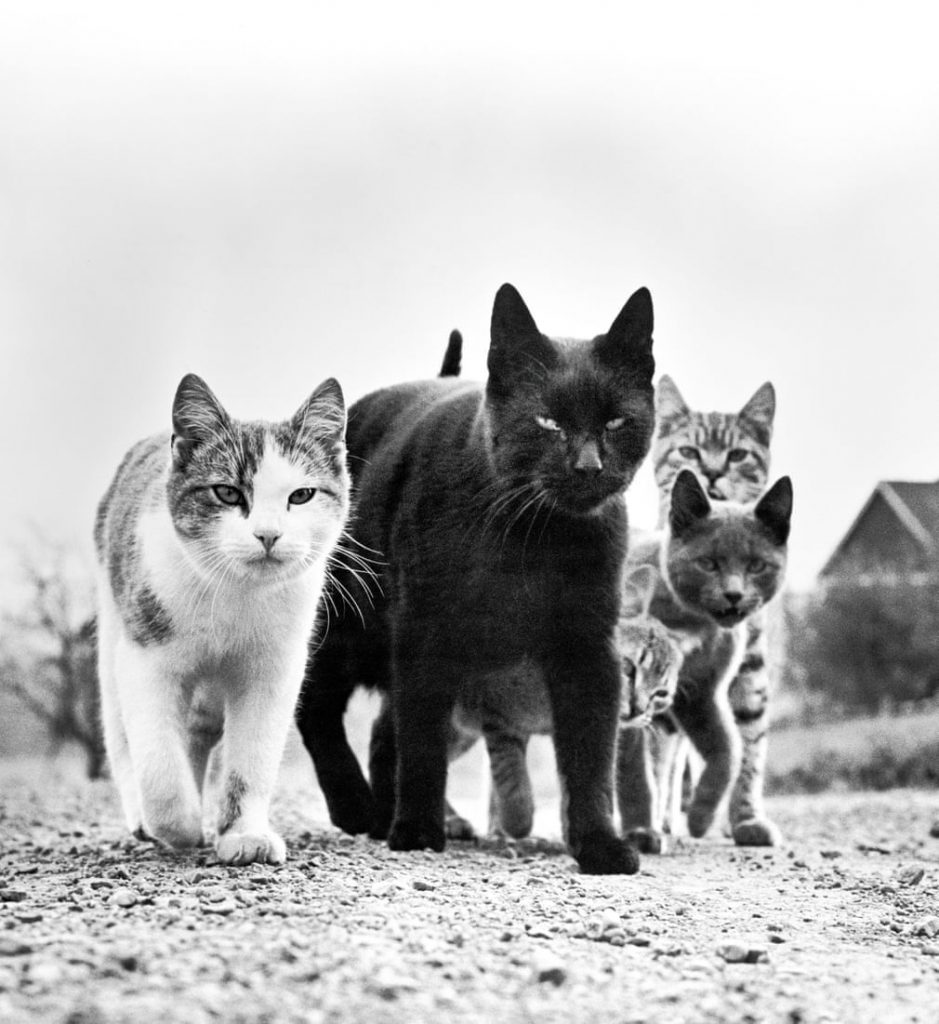
In December 1949, late on a late winter’s evening, Walter was trudging to his three-room apartment through the New York city snow, when he spotted a kitten huddled in an alley. He cradled the shivering feline, slipped him into his heavy army coat, and carried him home to Queens, with the one thought of giving the poor creature a decent meal and bed for the night. Later, he gave the kitten as a present to his wife Maria, who was pregnant with their first child at the time. Around 11 o’clock that night, the kitten started charging around each room in the apartment like a demon possessed, astonishing Walter and Maria. “That cat is loco!” Maria exclaimed…. and the name stuck!
When Walter began taking pictures of his new adopted pet, he was so inspired by the results that he started photographing more kittens at a local animal shelter. So began an extraordinary career that would span seven decades.
The photo above is one of Chandoha’s most celebrated photos. The story goes that at one time, quite a few cats called in at the Chandoha’s farm home. Because he often fed them, these cats developed the habit of following Chandoha (No surprise there!). One day, while walking down the road with his camera, a gang of cats began tailing him. He dropped on his stomach in the road and took an iconic image of five determined cats ambling toward the camera.
Additional subjects for which Walter is known are fruits, vegetables, flowers, and New York City street scenes. Over his long career, his archive grew to more than 225,000 photographs including approximately 90,000 photographs of cats.
RIP Walter George Chandoha
(November 30, 1920 – January 11, 2019)
A book ‘Walter Chandoha. Cats. Photographs 1942–2018’ is published by Taschen, if you can afford it, that is!
Read more about the great man and his work on the New York Times website ,and another informative article about Walter here.
The Himalayan, Himalayan Persian (or Colourpoint Persian as it is commonly referred to in Europe), is a sub-breed of long-haired cat similar in type to the Persian, with the exception of its blue eyes and its point colouration which were derived from crossing the Persian with the Siamese.
The creation of the ‘Himmy’ took years of selective breeding as the two cats from which it is derived are totaly different. The Persian then: is short stocky and heavy-boned, with long fur, whereas the Siamese: is long slim, and fine-boned and with short fur!
Cat of the Month ~ October 2019
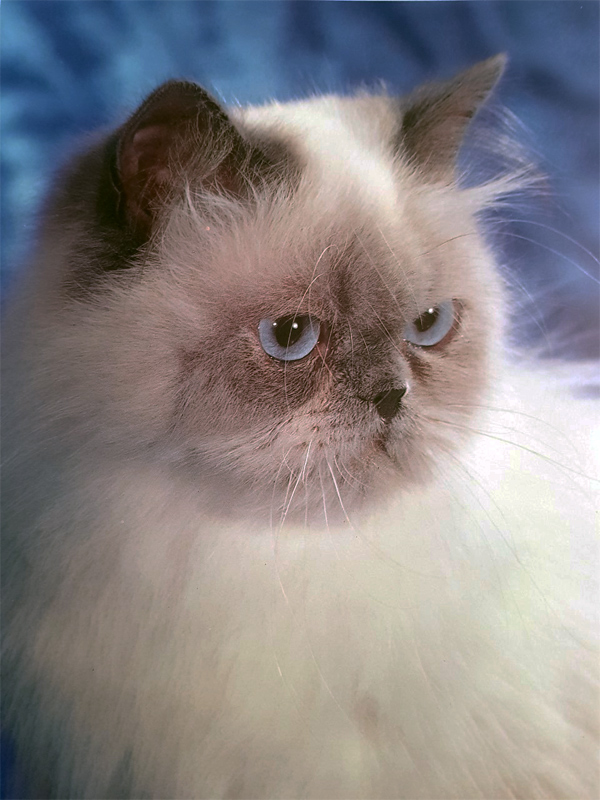
Photograph: © Robert and Eunice Pearcy
It was in 1924 that a swedish geneticist start the cross breed process, by crossing a Siamese, Birman and a Persian cat. These trials were not completed it seems, and, it took a jump across the pond (careful Oscar) to Harvard Medical School 1930, where two medical students crossed Siamese with Smoke, Silver Tabby and Black Persians, producing a large number of short-haired kittens. Two of these kittens were mated, resulting in the birth of the first long haired black female Himalayan. When breeding this animal with her father (look away now, Oscar!) the resulting cat was the first Himalayan, with both points and long hair.
Some registries may classify the Himalayan as a long-haired sub-breed of Siamese, or a Colourpoint sub-breed of Persian. The World Cat Federation has merged them with the Colourpoint Shorthair and Javanese into a single breed, known as the Colourpoint.
The Cat Fanciers’ Association considers the Himalayan Persian simply a colour variation of the Persian, rather than a separate breed, although they do compete at Cat Shows in their own colour divisions. It was for the colour (only) that the breed was named “Himalayan”: a reference to the coloration of Himalayan animals, and in particular the Himalayan rabbit.
These cats are good natured, intelligent, and generally very social, but they have been known to be moody at times. Because of their heritage from the Siamese cats, they tend to be more active than Persians.
Himalayans are good indoor companion cats. They are gentle, calm and like most cats they are playful. Like the Siamese, most Himalayans love to stalk and chase balls of wool, mouse or fish toys and anything long and thin like string. Himalayans are devoted and dependent upon their humans for companionship and protection. They seem to really like the affection of a human and generally love to be petted and groomed.
If you want to bond with your Himalayan, why not spend half an hour grooming her a day/every day. She will love it if she is typical of her kind, and after all, this grooming is thought to be essential to the wellbeing of this feline.
Because they have long, silky hair that tangles and mats easily, a Himalayan’s coat should be brushed daily. This will remove and prevent tangling and mats, and help remove any dirt and dust (after all the coat will act like a duster around your home). Professional grooming is also recommended every few months to ensure their coat is healthy and clean, but for most this may be a little expensive.
Like all cats Himalayan’s love to sharpen thier claws, and what better place than the legs of your favourite occasional table. Many advise trimming of claws but we wouldn’t advise it (would we Oscar, you like your scratching too much for that). How about finding some soft material and putting that around the legs of your precious furniture, then we will all get along just fine. (so, please for Oscars sake, leave them paws alone)!
Examination of your cat weekly will uncover a multitiude of problems (well hopefully not). For example, Himalayans’ pointed ears are susceptible to capturing dirt and whatever else can fall from the sky or a hedge in your garden. This, if left undisturbed, can lead to irritation and later infection. So, if you see or find debris in your cat’s ears, use a pet ear cleaner and cotton ball to gently remove it. It is not advised to use cotton buds as the ears of all cats are so delicate and full of small capilliaries carrying blood (it can get messy and Oscar won’t thank you, no sir). If the ears are very red or inflamed, very dirty, or smell strongly, take her to the veterinarian as soon as possible, and get it checked out.
Finally, we’re glad to say that Himalayans are vary playful, but they will get into mischief if they become bored. So, the golden rule is – Get those cat toys out and Keep Playing. It’ll do you good too …..
Sources: Wikipedia.org, The Pictorial Encyclopedia of Cats by Britt Strader & others
Cat of the Month ~ August 2019
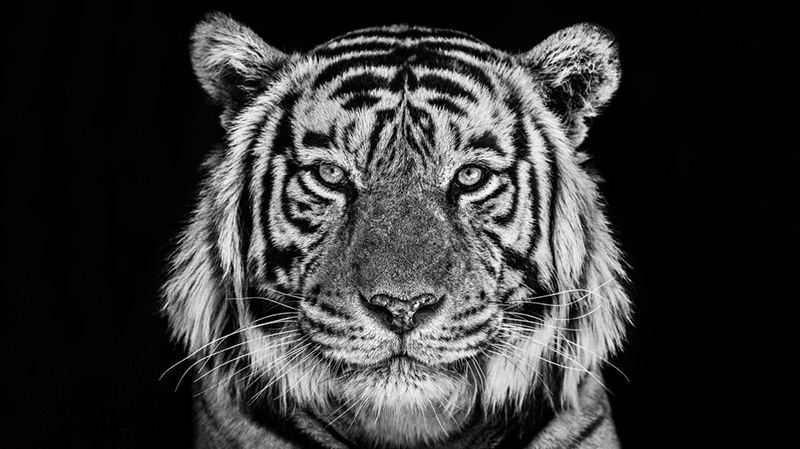
Photograph: © David Yarrow
After more than two hundred hours spent in the humid furnace that is the Ranthambore National Park, India, this image of the elusive tiger was finally captured.
Ranthambore Park is a wildlife sanctuary containing a huge variety of animals, birds and reptiles within it. These include Tigers, Leopards, Striped Hyenas, Sambar Deer, Hanuman Langurs, Macaques, Jackals, Jungle cats, Caracals, Common Palm Civets and Desert Cats.
The well known 4 year old ‘Singhsth’ had retreated out of the heat of the day into the cool, dark recess of a cave. Vipul Jain could just see the tiger in the cave mouth and he then passed the message on to his companion, photographer David Yarrow.
Luckily the sunlight was just strong enough to light up the tigers face in the shadow of the cave…. “if it was a foot further back in the cave, there would have been no shot” recalled Mr Yarrow.
The good news is that, after many years of decline, the Indian Tiger census is showing rapid population growth. This was reported on the BBC ‘Tigers in India’ News Webpage
Cat of the Month ~ February 2019
They brought her in like she was a snowball!
Fluffy’s fur was matted with snow when her owners found her in a frozen ball and unmoving in a field in northern Montana, USA. Fearing the worst, they called the local animal hospital.
The veterinary team arrived soon after, and the poor creature was rushed to an emergency room in the local Animal Clinic of Kalispell. Here, the skilled vets used warm blankets and a hairdryer to slowly bring the feline back to life from her frozen slumbers.
At long last, after a few tentative hours, Fluffy started showing signs of recovery. The clinic then made a Facebook post about Fluffy’s recovery, which subsequently went viral….and it’s no wonder! The post explained the story of this poor but lucky feline.
“…in an amazing success and survival story from this week. Some clients found their injured cat buried in snow.”
“They brought her to us essentially frozen and unresponsive. Her temperature was very low but after many hours she recovered and is now completely normal.
“Fluffy is amazing!”
The story was posted alongside pictures of Fluffy’s incredible recovery, including the image below of a vet using a hairdryer on the cat’s fur.
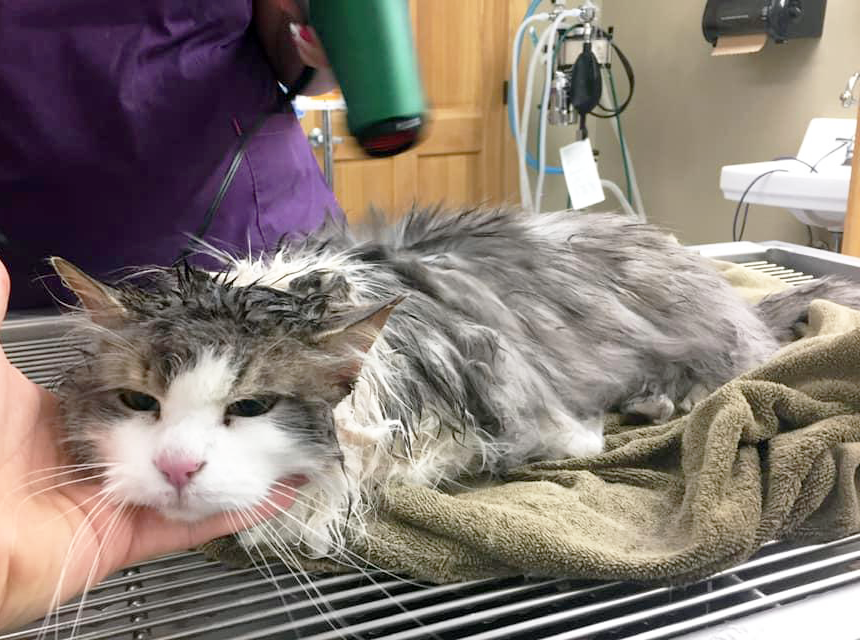
Photograph: © Animal Clinic of Kalispell
Many hundreds of well-wishers commented on the Facebook post, which has had thousands of likes & shares since it was posted.
The final image showed Fluffy looking the picture of health with a completely snow-free coat.
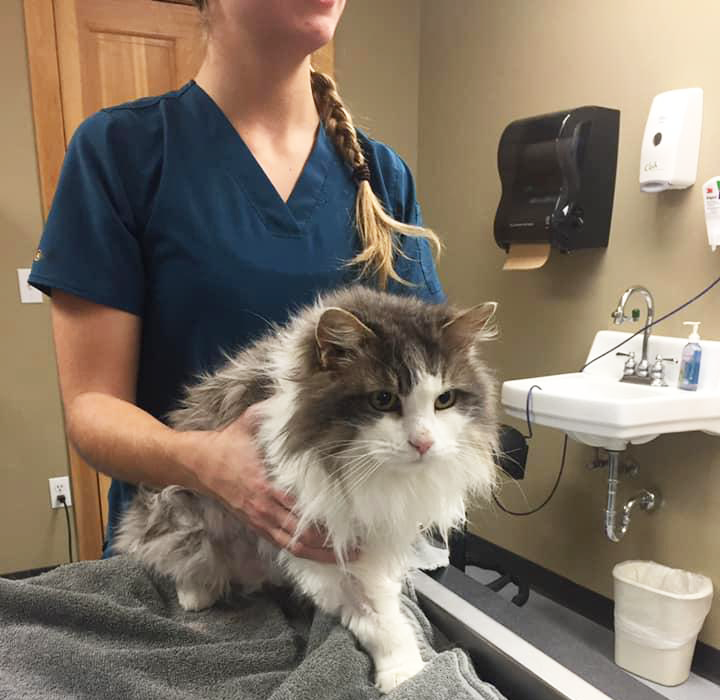
Photograph: © Animal Clinic of Kalispell
Oscar and I concur that Fluffy is indeed one heck of a miracle moggy,..and a beauty too. We’re sending our love to her and to her family, on the other side of the pond.
I hope all the new year resolutions to be kinder to yourself, to cats (of course) and all other animals too, are going well.
It’s on that topic that I am appealing today.
Three years ago my humans got me from ‘The Animal House’ a small animal charity in Birmingham, England, who did fabulous work for me all my cat and dog acquaintances there.
You see, I had fallen on hard times, and my old keepers couldn’t keep me any longer — but ‘The Animal House’ came to the rescue and fostered me to a kind carer called Lyn.
Of course I am now the love of my humans’ life, the moon in their June the light of their darkness, etc. etc. ,but not all cats (or dogs) are so fortunate.
Cat of the Month ~ January 2019
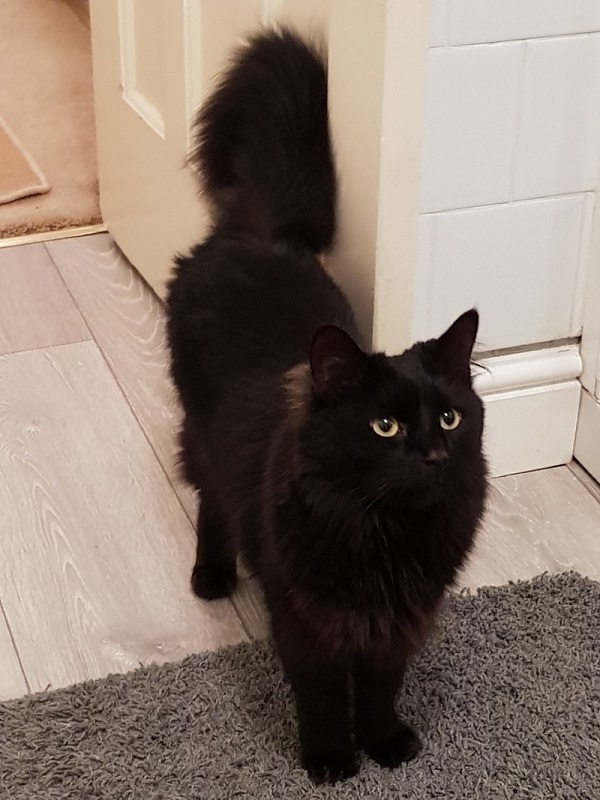
Photograph: Ed.
When I saw ‘The Animal House’ website recently I knew that I just had to raise awareness for them as they were once so kind to me, just when I needed it. So if you can do anything to help the wonderful work they do for animals at all, as their vets’ bills are through the roof, please look at their website, adopt an animal (a cat, preferably of course), volunteer or make a donation – however small, it will be appreciated I’m sure. Let’s spread the good karma for cats and to all other animals in 2019. hey, enough already about the cats Osc, I think your’re biased somehow) Ed.
Lots of Love Oscar x x x
The Animal House Rescue doesn’t have a rescue centre, instead of using kennelling facilities we have a network of local foster carers. Our foster carers open up their hearts and homes to animals, that are homeless through no fault of their own.